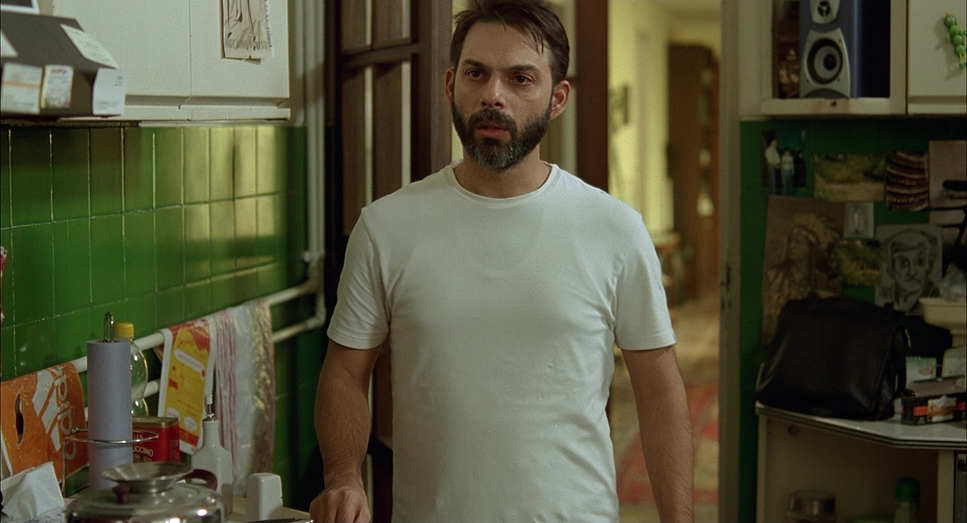Greetings, I’m Salik Waquas, a professional colorist and filmmaker. As the owner of a post-production color grading suite, I’ve dedicated my career to exploring the nuances of visual storytelling. Cinematography, to me, is not just about capturing images but about conveying emotions and narratives through light, composition, and movement. One film that has profoundly influenced my perspective is Asghar Farhadi’s “A Separation.” Its minimalist yet impactful cinematography offers a masterclass in how subtle visual choices can enhance storytelling. I’d like to share my analysis of this film’s cinematography, delving into the techniques that make it a standout piece in realist filmmaking.
About the Cinematographer

The visual depth of “A Separation” is largely due to the work of Mahmoud Kalari, one of Iran’s most esteemed cinematographers. With decades of experience, Kalari has a distinctive style characterized by emotional depth and naturalism. His approach to cinematography emphasizes blending seamlessly with the narrative, ensuring that the visuals enhance rather than distract from the story. Collaborating with Farhadi, Kalari’s “invisible cinematography” allows the audience to become silent observers, fully immersed in the characters’ lives without being overtly aware of the camera’s presence.
Inspiration for the Cinematography of “A Separation”

The film draws inspiration from the rich tradition of Iranian neorealism, a style known for its authentic depiction of everyday life and ordinary struggles. Unlike the metaphor-heavy and non-linear narratives often found in Iranian cinema, “A Separation” opts for a dialogue-driven, linear storyline. This departure from tradition is intentional, aiming to ground the viewer in the characters’ reality. Farhadi and Kalari’s commitment to realism serves to obscure easy answers, reflecting the moral ambiguities and societal complexities the characters navigate. This ethos aligns with Jean Renoir’s sentiment from “Rules of the Game”: “The awful thing about life is this. Everybody has their reasons.”
Camera Movements Used in “A Separation”

One of the most striking aspects of the film is its use of handheld, documentary-style camera work. The subtle shakiness and minimal movements create an intimacy and immediacy, drawing the audience into the unfolding drama. The camera is often placed at eye level, making viewers feel like participants rather than mere spectators. Farhadi avoids flamboyant camera techniques, favoring naturalistic tracking shots and stationary takes. During moments of heightened tension, such as confrontations between characters, the camera subtly shifts to emphasize emotional weight without resorting to overt choreography.
Compositions in “A Separation”

The film’s compositions are meticulously crafted to reflect themes of division and isolation. Kalari frequently frames characters through barriers like doors, windows, and mirrors, creating visual metaphors for their emotional and social separations. Tight framing conveys a sense of entrapment, both physically and emotionally. In crowded frames, especially during arguments or courtroom scenes, the overwhelming presence of objects and people mirrors the characters’ internal conflicts. The opening scene, where Nader and Simin present their case to an unseen judge, is a masterclass in visual storytelling—despite sitting side by side, they are framed in isolation, highlighting their emotional chasm.
Lighting Style of “A Separation”

Lighting plays a crucial role in enhancing the film’s naturalistic aesthetic. Kalari employs soft, diffused lighting to mimic natural light sources, avoiding dramatic setups. This approach adds authenticity, making scenes feel organic and unforced. The lighting subtly shifts to match the emotional tone of each scene. Moments of confrontation feature harsher lighting with pronounced shadows, accentuating the characters’ turmoil. In contrast, vulnerable moments are bathed in softer light, emphasizing their humanity. Indoor scenes often utilize a mix of warm and cool tones, reflecting the emotional temperature of interactions. For instance, the kitchen—a frequent setting for intense discussions—is lit with greenish hues, symbolizing the characters’ entrapment within societal and familial expectations.
Lensing and Blocking in “A Separation”

The lensing choices in the film contribute significantly to its intimate atmosphere. A mix of medium and close-up shots maintains a personal connection with the characters, while a shallow depth of field in certain scenes focuses attention on specific emotions or details. Kalari’s lensing ensures that the viewer is always engaged with the characters’ inner worlds.
Blocking is equally deliberate. Farhadi’s meticulous choreography of actors within the frame mirrors their relationships and power dynamics. Physical positioning often reflects emotional distance—characters drift apart during arguments or are separated by objects within the frame. For example, Nader and Razieh’s confrontations are frequently shot with barriers between them, emphasizing their ideological and emotional divides.
Color Grading of “A Separation”

The film’s color palette is muted and somber, aligning with its themes of moral ambiguity and personal struggle. Earthy tones like browns, grays, and beiges dominate, ensuring that the visuals enhance the grounded atmosphere without distracting from the narrative. Greens, whites, and reds—the colors of the Iranian flag—are subtly integrated, particularly in the kitchen scenes, tying the characters’ personal dilemmas to broader national identity. The restrained color grading avoids the glossy finish of mainstream cinema, reinforcing the film’s raw and authentic aesthetic.
Technical Aspects of “A Separation”
From a technical standpoint, the film exemplifies minimalist filmmaking. The choice of equipment favored practicality and naturalism over high-end cinematic effects. Handheld cameras and lenses suitable for tight indoor spaces allowed for flexibility and immediacy. The sound design is understated, with the absence of a musical score drawing focus to diegetic sounds, enhancing realism.
Editing is restrained and purposeful. Farhadi employs continuity editing to maintain the flow of conversations and interactions, avoiding flashy transitions or dramatic cuts. The pacing is deliberate, allowing tension to build organically. Each technical choice—from camera movement to lighting, from lensing to color grading—works in harmony to support the narrative, creating a cohesive visual language that aligns perfectly with the story’s themes.